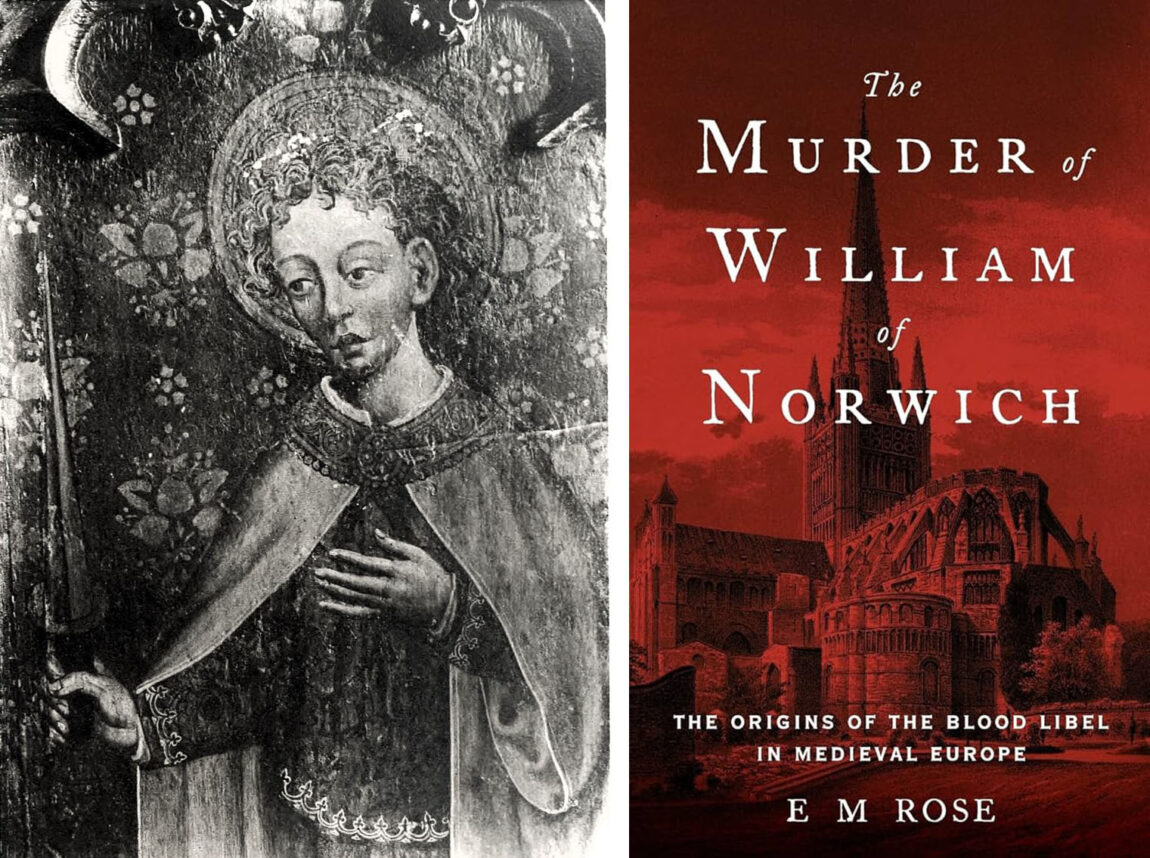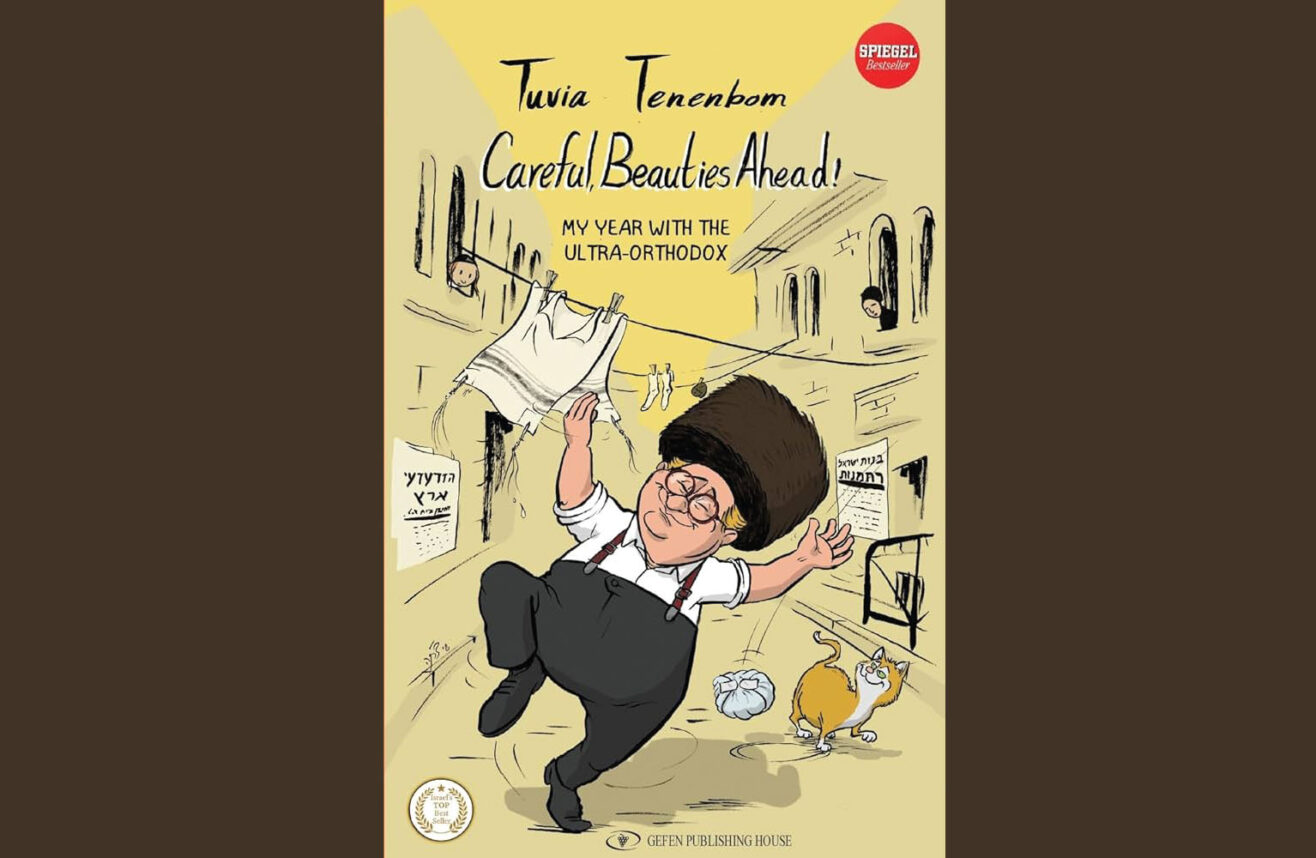 Donny Osmond in Andrew Lloyd Webber’s “Joseph And The Amazing Technicolor Dreamcoat.” (Photo by Getty Images)
Donny Osmond in Andrew Lloyd Webber’s “Joseph And The Amazing Technicolor Dreamcoat.” (Photo by Getty Images) Oh, how Donny Osmond loved his coat of many colors. To countless preteen Jews of a certain era, raptly watching the future “Dancing with the Stars” winner and runner-up on “The Masked Singer” play the titular role in 1999’s direct-to-video “Joseph and his Amazing Technicolor Dreamcoat” 12 or 13 times marked their becoming a bat or bar mitzvah. While discovering later in life that Osmond wasn’t actually a member of the tribe (he’s Mormon) might have been the moment they actually became adults, it will likely come as a further surprise that the most famous frock this side of the black and blue — or was it white and gold? — dress that broke the internet almost a decade ago might not actually have been red and yellow and green and brown and blue after all.
The ancient Talmudic rabbis, those expert readers of the Bible, struggled to understand the phrase ketonet pasim, which the text uses to describe the garment that Jacob bestowed upon his favorite son in Genesis’ 37th chapter, sparking the jealousy of Joseph’s siblings.
Perhaps it was a reference to pas, meaning palm. A coat whose sleeves extended past one’s wrists would signal that its wearer was of noble stature, an aristocrat with no need to literally roll up his sleeves and work the fields. Maybe it was of such fine material, exceedingly thin and light, that it could be hidden in the palm of a hand.
The garment was ornamented by God Himself during humanity’s earliest days, went another midrashic tradition found in a Yemenite collection and published in the Torah Sheleima. After Adam and Eve sinned by eating the forbidden fruit, they realized they were nude and in need of clothing. God fashioned a special cloak for them from the skin sloughed off from the snake who had tempted them into sinning. This divinely designed attire appeared superimposed, Forrest Gump-like, throughout subsequent biblical tales. It adorned Nimrod, the king who threw Abraham into a fiery furnace to test his faith. Esau stripped Nimrod of it, only to have Jacob wear it while stealing the blessing from their father, Isaac. It was then gifted by Jacob to Joseph. After the brothers tore it from Joseph and dipped it in blood as fabricated proof of Joseph’s demise at the paws of a wild animal, it was eventually repaired, cleaned off, and, after the Iraelites exited from Egypt and built the Tabernacle, it adorned the High Priest.
Some suggested the word was an almost Freudian slip, a signal of larger forces at work. Pasim was an unintentional acronym, referencing the four troubles that Joseph would have to overcome on his journey from brotherly betrayal to second-in-command to Pharaoh. The Hebrew letter pey referred to Potiphar, the Egyptian official whose amorous wife’s attempted seduction of Joseph landed him in jail. The samech shouted out the sochrim, merchants, who shlepped Joseph from Canaan to Egypt. The remaining two letters, yud and mem, referred to the hairy bunch of Ishmaelites and the Midianites, those slave-traders who swapped Joseph back and forth on the trek towards the Nile.
To Reish Lakish, pasim was a peek far into the future. Decades after Jacob, Joseph and the brothers reunited happily in Egypt, a new Pharaoh arose and enslaved their descendants. When Moses eventually led the exodus of those slaves, he took the casket of Joseph with him, to be buried back in the Holy Land. It was, went the tradition, the sight of the righteous Joseph’s bones that caused the Red Sea to split, allowing the Israelites to pass through on dry land. Pasim was actually a portmanteau of pas and yam, strip of sea.
In what comic book fans would call retconning (as in “retroactive continuity”), another suggestion was made that pasim might derive from payis, the post-Biblical Hebrew word for lottery. The brothers, nervous over their father buying their concocted tale of Joseph’s death, drew lots over who would attempt to delude Jacob.
Later biblical commentators continued parsing pasim. Perhaps it meant painted, or embroidered with some special design. To Radak, it meant striped. Rashi thought it referred to fine wool. Bechor Shor hypothesized that it derived from the same Hebrew word as lephayes, to appease, since Joseph would be pleased with the special gift. Sforno thought it a symbol of authority, a cloak to connote Joseph’s being elevated above his siblings in the family hierarchy. The Malbim, standing on ceremony, suggested the cloak was meant to bestow honor not on its wearer but on Jacob himself. With the other brothers out shepherding their flocks, Joseph would attend to his father. He who stands before a patriarch should have dignified dress for the occasion.
Modern scholars, turning to ancient Near Eastern languages for insight, looked to Akkadian. In that now extinct tongue, “‘kitu pishannu” described “a ceremonial robe which could be draped about statues of goddesses and have various gold ornaments sewed onto it.” This jives with many of the suggestions hypothesized by the rabbis millennia ago that the garment signaled special standing and bore an elaborate design.
It was the Septuagint, that ancient Greek translation of the Bible composed around the third century BCE who gifted us with the idea that the coat was polychromatic. It translates pasim as “poikilos,” meaning many-colored or spotted.
While the latest film iteration of Jacob and sons’ Pharaoh-as-Elvis and calypso-music-filled tale will go, go, go soon enough to a theater near you, we can spend the meantime considering the coat’s legacy.
On Passover, Jews dip a piece of vegetable known as karpas into salt water. Some have suggested this is a callback to that ketonet pasim, that gift which sparked the brothers’ jealousy, led to Joseph’s sale into slavery and foreshadowed the Jews’ subsequent enslavement in Egypt. By celebrating our liberation at the Seder, we express the realization that true freedom can be found in a social dynamic that cultivates feelings of fellowship over favoritism.
The teaching that the High Priest, bedecked in Joseph’s old coat, leads the Yom Kippur service in which the Israelites are forgiven for their sins, also offers insight. It was a slaughtered goat whose blood was used to trick Jacob into believing Joseph was dead. The subsequent mandate that the High Priest is to slaughter a goat as part of the Temple service on the Day of Repentance reminds us that even if our sins aren’t on the level of brotherly betrayal, they can still echo for generations. Before minor disagreements escalate into full-scale four-hundred-years-of-slavery-level disasters, best to put aside pride and proactively seek forgiveness when the opportunity arises.
Finally, whether it was polka-dotted, painted, striped, or made of the smoothest silk, what Joseph wore, like what we wear, shapes how we are perceived. When we close our eyes and draw back the curtain to see for certain what we want others to know about us, our style and status will no doubt jostle their way into our decision making. But best to make like Jacob’s favorite son and realize that it’s less about how we dress and more about what we dream.
Rabbi Dr. Stuart Halpern is the Senior Advisor to the Provost and Senior Program Officer of the Straus Center for Torah and Western Thought at Yeshiva University, and the editor of “Esther in America” (Maggid Books).






















 More news and opinions than at a Shabbat dinner, right in your inbox.
More news and opinions than at a Shabbat dinner, right in your inbox.